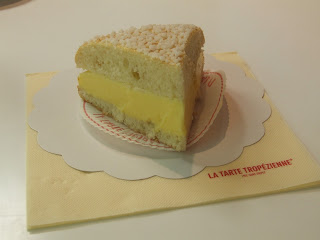 |
| Achille Knapen's puits aerien at Trans-en-Provence |
It was a sort-of 'folly' created by a Belgian engineer, called Achille Knapen.
A 'folly' is generally thought of as something useless but beautiful, yet that was not how Monsieur Knapen saw his work - even if it turned out that way.
I learned it actually was a well, but it was one that collected the moisture in the air by condensation, rather than water itself, hence the name 'puits aerien' - literally 'air wells'.
Monsieur Knapen had attended a conference in Algeria in 1928, on drought and had put forward his idea to develop these puits aeriens in Africa for countries suffering drought.
Simply, they work as cold night air enters a metallic tube that runs down the centre of the well, while during the day, warm air enters the building through the hundreds of orifices on the sides of the well.
 |
| Inside the puits, showing the central tube. |
When the warm air hits the cold central tube, it condenses, forming droplets of water which are collected in a reservoir underneath.
The African project did not go ahead and M. Knapen brought his ideas to France. He decided on a site at Trans-en-Provence as the most suitable place for his first experiment with le puits aerien.The town was elevated enough and it was not only exposed to cool night winds from the mountains to the north, but also to the warm, moist winds from the sea.
When the dome-shaped structure was finished in 1931 it measured 12 metres across and 12m high, like a giant upturned stone bell.
However after 18 months of use, his efforts had not borne fruit. On the best nights, M. Knapen only collected about a bucket of water - certainly insufficient for the residents of Trans-en-Provence.
 |
| The archway through to the inner workings. |
So why did his experiment go so wrong?
Le puits areien remains - its elegant silhouette graces the hillside opposite the entrance to the town. It is fascinating to visit and walk around and see the amount of work that went into it.
But despite never having served its original purpose, the redoubtable 'air well' has carved out a new one - that of a tourist attraction and I am sure M Knapen would be pleased to know that is now listed as part of the town's heritage.














